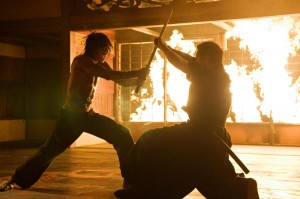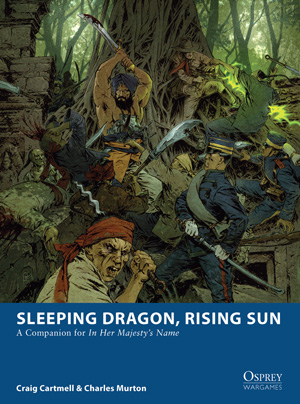A Unified Whole
By The Warden

This is the 78th instalment of Under the Hood. In that time, there a few things I’ve learned working on this column. One, I can’t stop spelling “instalment” without putting an extra “l” in the middle. Two, repetition is always a risk. Not because there’s less and less to talk about as time goes on, but certain topics and issues related to game mechanics revolve back around like a ferris wheel. To play it safe (and because my memory is aged and deficient), I like to go over previous instal… posts and ensure I haven’t used that topic before.
It’s a good thing too, because I had a topic on my mind all evening. How many RPGs use opposing resolution systems in their mechanics? It was nothing more than a concept before I took the dogs for a walk and it billowed into a concise argument by the time I returned home, yet I felt as if this had been covered once before. And it had, back in April 2012. Guess that’s that, right?
Not necessarily. As I said before, topics on game mechanics return to the forefront and it’s for good reason. There’s always another way to look at them. It’s how I like to consider everything in life and I pride myself on never having a locked viewpoint on anything. That doesn’t mean I’ve changed my mind on opposing mechanics in the past 17 months, but I do have something more I want to add to the topic.
After reading a few independent RPGs lately, I’ve noticed a trend with those using opposed rolls as their core resolution system. I’ve always loved opposed rolls for the sheer fact that defence is an active role for players, not just a passive decision made during character creation or while getting dressed the morning before entering the dungeon. In this case, I’m talking about games where combat is handled using opposed rolls rather than the odd game here and there where you can make opposed skill checks. We’ll get to those in a second. What I find unfortunate about core opposed rolls is how they always seem to fall flat in creating a sweet unified resolution system as soon as they hit that most dreaded of all design foes.
The difficulty roll.
In nearly every case, any RPG using opposed rolls to determine the majority of resolution determination resorts back to target numbers when a character attempts anything against a non-living, non-reactive challenge. It does make sense when you stop and think about it. Doors don’t move and they’re manufactured to be consistently durable and hearty against damage, environmental effects, and intrusion. Why should they risk rolling a natural 1 on a d20? Seems like solid logic in the real world, but we’re not talking about the real world, are we? We’re talking about a game.
Remember our earlier discussion on baseline physics? Task resolution is actually another form of baseline physics. How you determine task resolution is based on how your abstract characters interact with their environment and other abstract characters within it. The way I see it, providing two different means of interaction is like stating the laws of gravity have one teeny little exception whenever you’re more than five feet off the ground. When the crux of your game involves making opposed rolls to determine success in combat, but not in non-combat activities, there’s a flaw in the game.
Typically, difficulty rolls represent a minimum amount of challenge and effort needed to complete the task. Adapting it to a variable opposed roll tends to give the impression that the difficulty in picking a lock, climbing a moss covered wall, or hacking into a mech’s operating system sways up and down with time and so these systems revert back to the classic target number. That’s fine and it falls back on a traditional application of mechanics because if the mechanics don’t feel right for the game or the task at hand, players will be torn from their suspension of disbelief and find the game broken.
What if that approach is overly simplistic? On the surface, picking a lock seems to be a fairly cut-and-dry activity. You have to know what you’re doing, it’s a combination of experience and nimble fingers, and the type of lock involved determines the amount of work required to open it without the proper key. But it’s not always that simple, as my father-in-law, a locksmith, will tell you. Some locks have rusted from the inside and become tougher to open, or they’re an older/newer model with a couple of extra quirks. Add to that the efforts of the lock-picker and it’s about more than just skill and knowledge: sometimes it’s just about dumb luck. My point is that there is as much variety in performing what may seem to be a basic task as there is attempting to strike an opponent in combat.
If we work from the traditional model of d20 games, dice rolls are the randomizer combined with the steady hand of a static bonus (or penalty). That’s the constant; you know you will always be able to achieve at least 1 + your modifier when you roll the dice. If you’re going up against an opponent with +15 to their defence, you know the opponent will have at least a 16 ready to bat away your strike. In other words, you need to beat at least a DC 16. If your attack bonus is only +8, you need to roll at least an 8 on the d20 to have a fighting chance against this opponent. Then again, that’s assuming the odds of the opponent rolling a 1 on their die, so let’s default to the average roll on a d20. For argument’s sake, let’s say it’s 12. If the attacker’s bonus is +8, they can expect an average result of 20 for their attack. By the same token, the defender has an average defence of 27 (12 + 15). Right off the bat, the attacker has an uphill battle, but it’s not written in stone that they’ll always fail. There’s always a chance so long as the attacker rolls at least an 8 on their d20. Compare to that a static defence number of 27 and the attacker always has to roll at least a 19. The opposed roll provides a greater opportunity for success in combat, but with greater risks and suspense… just as it should be in combat. Opponents don’t just stand there and hack at each other until something hits; they duck, dodge, weave, and adapt their way to victory. Just like opposed rolls.
Now let’s take that approach to non-combat rolls, such as lockpicking. If the DC of a lock is 25 and the thief’s bonus is only +6, the odds are looking slim. It’s assuming the thief is not experienced enough to pick this lock unless they have a lucky break and that the lock is using some sort of advanced technology beyond the thief’s training, like some kind of super lock. If lockpicking required an opposed roll in the same way as combat, the thief still has a fighting chance, but it’s not a guarantee of success. It’s an opportunity for the thief to try and succeed despite the odds rather than be defined by them. To me, that’s an appealing and believable possibility.
Now let’s go back to the other POV: RPGs that use locked target numbers with an opposed roll exception every now and then. For example, combat in d20 games are rolled against a locked target number while attempting to push someone off the edge of a cliff requires an opposed roll. This is the complete opposite view of the other systems because it assumes living targets always require the same amount of skill to hit and damage solely based on the armour worn (and with a tiny boost from your Dexterity), but getting pushed around allows you to actively do something about it. In this case, the opposed roll is a quirk thrown in for good measure, perhaps to avoid creating yet another source for yet another target number on a character sheet. While the same principle of mixed resolution applies, it doesn’t seem quite as wide a gap as it does when opposed rolls are your primary tool for task resolution.
If we work from the assumption that how a game handles combat sets the overall tone for how their mechanics work, than why not have all actions in a d20 game work against target numbers? Anything that normally requires an opposed roll – such as pushing an opponent – can build a target number based on the opponent’s existing stats. Something like a base DC of 10 + their Strength bonus + a size modifier + a couple of other possible modifiers fitting neatly onto a corresponding chart. Pathfinder was on the right track when it revised the truly atrocious d20 rules of grappling and created the Combat Maneuver Defence for combat, but maintained opposed rolls when it came to matters like Stealth vs. Perception checks. Ah, well, something’s better than nothing, I suppose.
This view came to me a couple of years ago when I wondered why I couldn’t roll my own defence in D&D or what would happen if pushing an opponent came with a complicated chart determined by a base DC and a boost from the character’s Strength bonus. It’s shaped how I look at games and how I design them, but that’s just how I like to do things. When it comes down to it, there’s nothing truly wrong with games with mixed task resolution, yet I can’t help but wonder what some games would be like if they unified their mechanics.
It seems to be a simpler way to create and define your game. Players and Gamemasters don’t need to know different rules for different situations, all they need is how all tasks – combative or friendly – are established and resolved using one unified resolution mechanic. From there, they are free to dive head first into the world you’ve created and go crazy with it for as long as they want. For independent games looking to spread their wings and fly in such a crowded airspace, launching with a smaller wingspan just makes a lot of sense.

